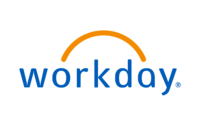NeoSystems is CMMC Level 2 Certified!
Security Program Management
A security program is a defined set of policies, procedures and resources that guide data protection. These programs are vital for all organizations working in an IT environment, but program development is often neglected due to a lack of personnel or internal resources. NeoSystems is a security program development consultant with CMMC Level 2 certification that can help your organization strengthen internal policies and reduce risks.
Security Program Development Support From NeoSystems
A well-defined security program is necessary for any organization with data to protect and regulations to comply with. NeoSystems offers years of expertise in security program development to help organizations establish systems and processes for securing data. Our program development support encompasses several key areas:
- Policy, procedure and process development to address security risks
- Compliance monitoring
- Incident response and business continuity
- Documentation strategy
- Asset management
- Access control
These security aspects enable organizations to protect their data, remain aware of the impact of their process and have defined procedures in the case of a security threat. Security programs are also integral to Cybersecurity Maturity Model Certifications (CMMC) compliance. Government contractors that face CMMC responsibilities can align with these requirements more effectively with a developed security program, among many other valuable security practices.
The key benefits of a security program and ongoing management include:
- Reduced risk of cyber threats
- Enhanced protection of sensitive information
- Streamlined internal processes
- Alignment with CMMC requirements
- Improve efficiency
Why Work With NeoSystems for Security Program Development Services?
NeoSystems has collaborated with organizations for over 18 years to strengthen internal policies and processes. We specialize in managed services, systems implementation, hosting and managed security to deliver solutions to organizations of all sizes.
Our managed security services play an essential role in CMMC compliance. We primarily work with government contractors to identify gaps in their CMMC processes and strengthen their security practices. Our team offers a wide range of managed security services that contribute to your CMMC goals.
We understand that the needs of every government contractor will vary. Our solutions are highly scalable to suit your unique demands. We also focus on affordability to keep our services accessible for small and mid-sized government contractors.
Whether you turn to our team for security program management alone or various managed security services, you can expect our support to make your organization more secure, efficient and compliant in the long term.











